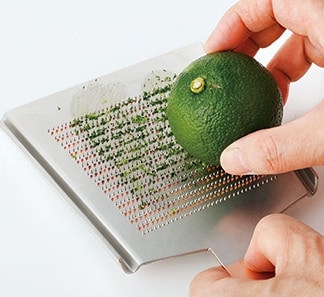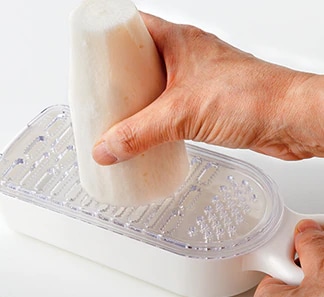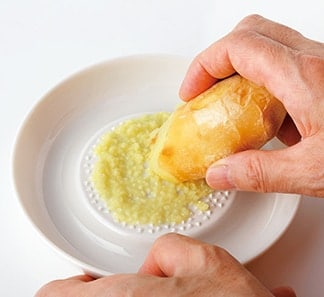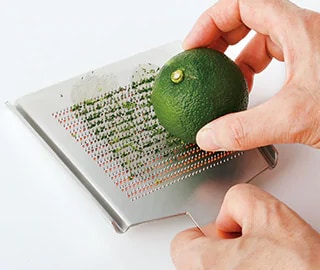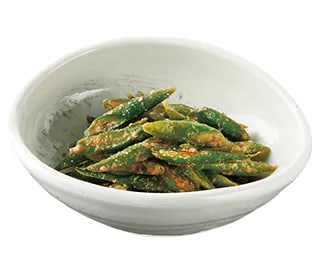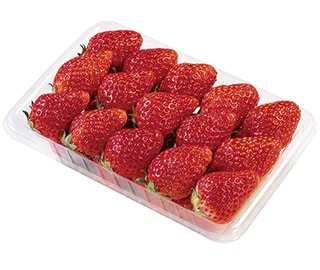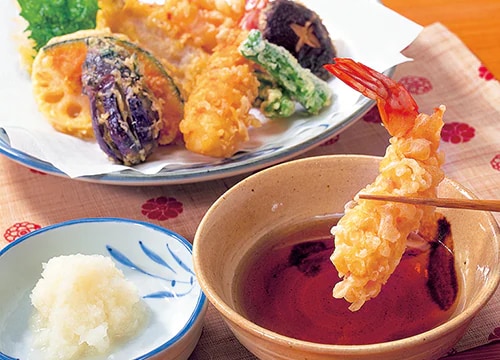
Grating is an essential method in preparing traditional Japanese cuisine. For example, grated ginger is used as garnish for bonito sashimi, and grated daikon is mixed in the dipping sauce when eating tempura. Daikon, ginger and wasabi are among the most commonly grated ingredients used in Japanese dishes. Grating creates unique tastes and textures, different to those produced by food processors or knives. Japan’s long history of using graters is evidenced in the Wakan Sansai Zue encyclopedia, published in 1712. There exist various types of graters, in differing sizes and shapes, and chefs select the most appropriate kind based on desired characteristics or finish of a particular ingredient. Small copper graters with very fine teeth are often preferred when grating ginger or yuzu peel. Graters that incorporate trays are used for high-water content vegetables such as daikon and onion; ceramic-plate graters are used for ginger. Graters with sharper spikes avoid damaging the cells of vegetables, thus preserving moisture and resulting in a smooth, airy texture.
